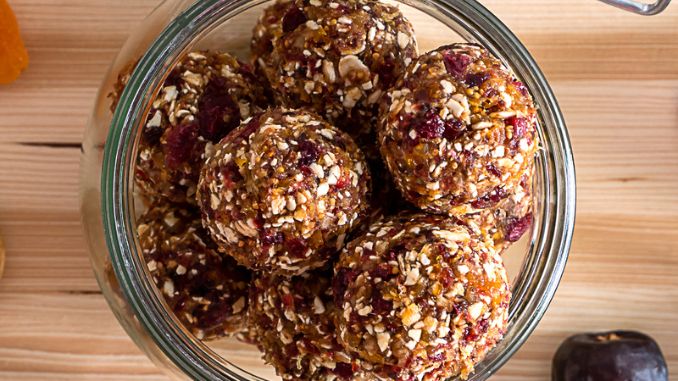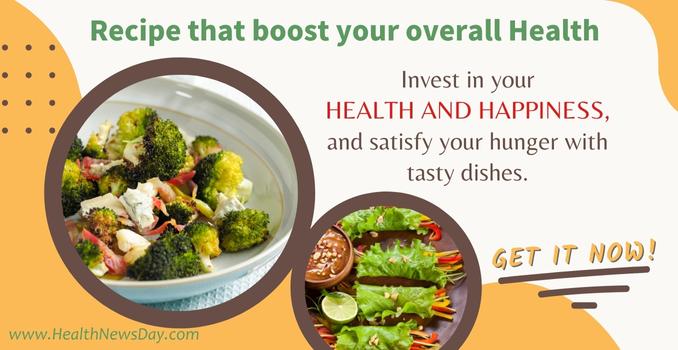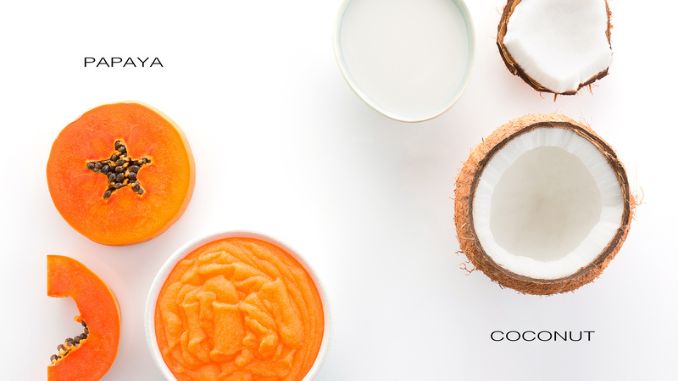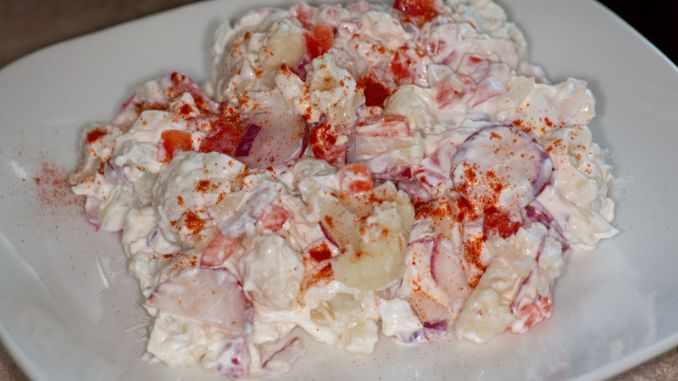All About Peanuts
About 40 days after sowing, the peanut plant comes to life with green leaves and yellow flower growth. Unlike most plants, the flowers of the peanut plant bloom above the ground, but the fruits develop beneath the soil. The peanut ovary, also known as the ‘peg’, starts to form when the flowers pollinate themselves, and the petals fall off. This peg then grows downwards, away from the plant, and into the earth. This is when the peanut embryo begins to take shape, laying horizontally on the ground and maturing over time into a full-grown peanut. Peanut plants have an extended fruiting period, which means they produce flowers, pegs, and peanuts over a more extended period, depending on the environmental conditions.
Four to five months for a peanut to go from planting to harvest
- Peanuts and peanut butter contain no cholesterol and are abundant in protein – one ounce of peanuts gives you more than 7g, while two tablespoons of peanut butter provide 15% of your daily protein needs. Research has demonstrated that a diet rich in plant-based foods could be beneficial when it comes to preventing certain chronic diseases, such as heart disease and cancer.
- Peanuts can be a good substitute for animal proteins, which contain a lot of saturated fats and can increase the danger of heart disease. Moreover, peanuts contain bioactive compounds that can limit the growth of cancer cells.
- Resveratrol, a powerful antioxidant found in peanuts, is thought to guard against heart disease and various types of cancer and possibly extend lifespan. P-coumaric acid, a polyphenol within peanuts, may shield cells from damage and may offer protection against cancer. Phytosterols in peanuts have been linked to a lower risk of cancer and heart disease.
- Peanuts are not only classed as a legume taxonomically, and as a nut nutritionally; this implies that they gain the benefits of both, as they include essential nutrients from both the legume and nut families.
- Peanut butter, which must contain at least 90% of peanuts according to the law, is usually the most widely used form of peanuts in the U.S. Moreover, half of the top 10 candy bars in the country contain peanuts or peanut butter.
- Peanut oil is incredibly sought-after by cooks and chefs worldwide for its tasteless and odorless nature, which does not transfer flavors, its high smoke point (440-460 F), and its high monounsaturated fat content.
- Peanuts are also available in powder form, which is high in protein, low in fat, and has an extended shelf life. This powder can be mixed into smoothies, shakes, bread, and other baked items.
- Peanuts are the most commonly consumed snack nut in the US, representing two-thirds of the market. One of the primary advantages of peanuts and peanut butter is their long shelf life.
What is Protein?
Protein is one of the most essential nutrients we need to consume, but it’s important to note that not all proteins offer the same benefits. Furthermore, you may not need to incorporate as much of it into your diet as you think. Get the facts about protein and learn how to ensure you eat the right protein-rich foods.
Protein comprises over twenty components, known as amino acids, necessary for sustaining life. Our bodies cannot store these amino acids, so they must be created from scratch or by altering existing ones. Among the 20+ amino acids are histidine, isoleucine, leucine, lysine, methionine, phenylalanine, threonine, tryptophan, and valine – which are considered essential and must be obtained through food.
- The National Academy of Medicine has established a broad range of suitable protein consumption daily, ranging from 10% to 35% of total caloric intake. There needs to be more extensive data on the optimal amount of protein required in the diet or the most healthful amount of calories coming from protein. A study at Harvard with over 130,000 participants over up to 32 years showed that the ratio of calories from total protein consumption was not linked to the number of deaths or particular causes of death. But the origin of the protein was a significant factor.
- It is noteworthy that many people, with a concentration on young kids, worldwide do not get the necessary amount of protein due to food insecurity. The consequences of protein deficiency and malnutrition differ in intensity, from stunted growth and loss of muscle mass to a weakened immune system, a weak heart and respiratory system, and even death.
- In contrast, it is rare for healthy adults in the U.S. and other highly developed countries to lack protein because there is an ample animal and plant-based meals with protein. Many people in the U.S. eat more than the required amount of protein, mainly from animal-based meals.
-
Consume items high in protein
Whenever we consume items high in protein, we also ingest the other components that come with them, like different fats, fibers, sodium, etc. This combination of elements that are included in the protein “package” could have an effect on our overall health.
- The chart below presents an example of food “packages” arranged according to their protein content and the components that come with it.
- Broiled sirloin steak is a great way to get a substantial amount of protein – around 33 grams – but it also contains 5 grams of saturated fat.
- Ham steak, which provides 22 grams of protein, is much lower in saturated fat at 1.6 grams but has a high amount of sodium at 1500 milligrams.
- Grilled sockeye salmon contains 30 grams of protein and is low in sodium. It also has 1 gram of saturated fat and is an excellent source of omega-3 fats, which are great for the heart.
- If you’re looking for a protein-rich and fiber-packed option with no sodium or saturated fat, lentils are a great choice. A cup of cooked lentils yields 18 grams of protein and 15 grams of fiber.
Looking for a healthy snack? Look no further than this 5-ingredient, no-bake peanut butter energy bites!
No-bake peanut butter is a healthy snack option that you can easily make at home. It’s also an excellent source of protein and good fats, which makes no-bake peanut butter a wholesome snack.
No-bake peanut butter has the same great flavor as traditional peanut butter but without the need for ovens and stirring for extended periods of time
These delicious bites provide you with a burst of energy any time you need it, and they’re full of healthy nutrients.
Let’s take a look at their most beneficial ingredients:
• Old Fashioned Oats — A great source of iron, calcium, and soluble fiber to keep your digestion on track.
• Peanut Butter — An excellent source of protein and potassium, vitamin E and magnesium. It’s also got a lot of healthy fats.
• Ground Flaxseed — An essential source of omega-3 fatty acids to support heart health. Plus, flaxseed is full of immune-supportive antioxidants.
• Raw, Organic Honey — Great at regulating blood sugar and increasing athletic performance.
You know these energy bites will be great for you. So here’s how to make your own energy bites at home!
Ingredients
You’ll need the ingredients listed above (plus dark chocolate chips!) in these quantities:
- 2 Tbsp. raw, organic honey
- 2/3 cup organic peanut butter
- ½ cup ground flaxseed
- 1 cup old fashioned oats
- ½ cup dark chocolate chips
The Recipe
Ready to get started? Here we go! These are the steps on how to make delicious No-Bake Peanut Butter Energy Bites.
1. In a medium-sized bowl, combine all five ingredients, mixing well with a spatula to evenly distribute everything.
2. Chill the mixture in the refrigerator for 20 to 30 minutes so that everything is easier to roll into balls.
3. After chilling, roll the mixture into small spheres of about a 1.5-inch diameter.
4. Put the balls in a small container and store in the fridge. They should last for up to a week!
Ditch the Candy Bars — Try These Instead!
One of the great things about these energy bites is that they’re delicious, but they’re also extremely healthy. So the next time you’re craving a candy bar, consider reaching for an energy bite instead of these common snacks that are actually harmful to your health.
You’ll be quenching your craving and doing your body a favor.
Share this recipe with your family and friends — and here’s to healthier eating!
What If I’m Allergic to Peanut Butter?
We cannot control which foods our body is allergic to, but we can look for ways to stay healthy and infused with protein. But it can be challenging to find snacks that don’t include nuts, especially if you’re looking for something with plenty of protein to keep you sat until your next meal. There are also foods that are rich in protein, without any nuts!
1. Sunflower/ Pumpkin Seeds
According to Brooke Alpert, founder of B Nutritious, sunflower or pumpkin seeds can work as a super healthy and protein-packed snack if you cannot have nuts. Kirkpatrick also recommends SunButter as a substitute for peanut butter, which has a similar amount of protein per serving. She explains that opting for SunButter is a great way to increase the amount of protein in your diet.
Ingredients:
- ½ cup Rolled Oats (50g)
- ½ cup Dried Dates (80g)
- ½ cup Dried Figs (80g)
- ⅛ cup Pumpkin Seeds (15g)
- ⅛ cup Sunflower Seeds (15g)
- 2 tbsp Sesame Seeds
- 2 tbsp Chia Seeds
Recipe:
- Put all the components into a food processor and blend them until they form a paste-like consistency.
- Take a small amount and roll it into a ball, and keep doing it until the mixture is finished.
- Move them to the refrigerator or freezer until they solidify or you’re ready to relish them.
- You can eat these energy balls immediately, but if you wish, stick them in the refrigerator or the freezer for a quarter of an hour to half an hour so they will become a bit more solid. Please remember that this waiting period isn’t counted as part of the total preparation time.
2. Lentils
Kristin Reisinger, the founder of IronPlate Studios in New Jersey, is particularly fond of creating crispy lentil energy bites. Although many recipes are available, Reisinger suggests mixing cooked lentils with additions like shredded coconut, sea salt, or a bit of honey, rolling them into balls, and baking them at 375 F for about 15 minutes. According to her, “Beans, when combined with other types of food, can provide a full amino acid profile and are an excellent source of protein.”
Ingredients:
- 1/2 cup (125 mL) dry oats
- 1/2 cup (125 mL) cooked split red lentils
- 1 1/2 Tbsp (20 mL) mini dark chocolate chips
- 1/2 tsp (2 mL) vanilla
- 2 Tbsp (30 mL) honey
- 1/4 cup (60 mL) coconut flakes (optional)
Recipe:
- Gather all the ingredients in a bowl and blend them until they are adequately combined and have a texture suitable for molding.
- Use a melon baller to form eight balls, then roll them in coconut flakes if you wish.
- Place them on a plate lined with parchment paper and store them in the refrigerator for a minimum of 15 minutes before you serve them.
3. Jerky
It’s no shock that a meat product would provide a lot of protein, which is why Alpert recommends jerky. Krave Jerky, which Alpert suggests, has nine grams of protein for each ounce. In a tight spot, as she puts it, “You want to consider the quality of the meat you’re eating.” That implies searching for “grass-fed,” “USDA organic,” or “no nitrates added” on the label.
Ingredients:
- 1 lb Ground Beef
- 2 1/2 tbsp Sweetener (Monkfruit Erythritol Blend, sugar, or sweetener of choice)
- 1 tsp Salt (if you’re sensitive to sodium, use 1/2 tsp instead)
- 1 tsp Black Pepper
- 2 tsp Garlic Powder
- 1/4 tsp Cayenne Pepper
- 2 tbsp Soy Sauce (less sodium if sensitive to sodium intake)
- 1 tbsp Worcestershire Sauce
- Jerky Gun
Recipe:
- First, you’ll need to get all the necessary ingredients.
- Then, preheat the oven to 300F.
- Mix the dry ingredients in a small bowl – sweetener, salt, black pepper, garlic powder, and cayenne pepper.
- In a separate bowl, blend the liquid components – soy sauce and Worcestershire sauce.
- Place the ground beef in a large bowl, add half of the dry and liquid seasonings, and mix.
- Once that’s done, add the rest of the seasoning and stir until everything is nicely combined.
- After that, you can use the jerky gun to make the beef strips or sticks on a sticking rack.
- Put the rack in the oven, bake at 300F for 10 minutes, then open the oven door to let the moisture escape and reduce the temperature to 170F.
- After that, cook for 2 and a half hours for the beef strips and 3 hours for the beef sticks.
- Once they’re done, let the beef sticks cool before you enjoy them. We suggest storing them in an airtight container in the fridge.
4. Eggs
Eggs are an excellent addition to your diet beyond just the occasional brunch. According to Reisinger, they are incredibly versatile and packed with protein. If you’re looking to get creative, try hard-boiling an egg and adding some hot sauce for a kick of flavor, layering it on top of some Ezekiel bread with mustard, or making a tasty egg salad and spreading it on a rice cake. For inspiration, take a page out of the Momofuku restaurant book and whip up their super delicious soy sauce eggs.
Ingredients:
- 4 eggs
- Pinch of salt
- 1/2 small tomato, chopped finely
- 1/4 bell pepper, chopped finely
- 4 tbsp cucumber, chopped finely
- 2 tbsp spinach, chopped
Recipe:
- Start by preheating the oven to 350 degrees Fahrenheit and coating the mini muffin tin with a nonstick spray.
- Crack the eggs into a big measuring cup and add a dash of salt.
- Whisk the ingredients together before pouring them into the muffin tray, with room to spare for the vegetables.
- Distribute the vegetables across the egg mixture evenly. Bake in the oven for around 10-12 minutes. Serve immediately or freeze for later.
5. Edamame
Alex Caspero, a registered dietitian and founder of the healthy recipe site Delish Knowledge, is quite the fan of edamame for snacking. According to her, a cup of edamame offers 17 grams of protein at under 200 calories. “I often advise my clients to have a package of edamame in the shell in the freezer at their workplace,” Caspero states. “Yes, the protein content is high, but so is the fiber content. For me, feeling full and satisfied involves a balance of protein and fiber.”
Ingredients:
- 1 Cup Quick Oats
- 1/3 Cup Honey
- 1/2 Cup Peanut Butter
- 1/3 Cup Chocolate Chips
- 1/2 Cup Chopped Sunshine Edamame Blend, chopped
Recipe:
- Gently combine all the components in a bowl of medium size.
- Put the blend in the refrigerator for 10 minutes or until it has hardened.
- Take a teaspoon of the combination and shape it into a ball – this recipe makes approximately 20 Bites.
- I returned the chocolate chip energy bites to the fridge after I made them to let them stiffen a bit more, but they can be consumed straight away. Enjoy!
6. Chia Seeds
According to Shapiro, chia seeds are incredibly beneficial for your health. He highlights that they contain calcium, protein, fiber, omega-3 fatty acids, and good carbs. He suggests chia pudding as a great snack – simply mix the seeds with milk to create a thick, creamy concoction. You can enhance the flavors by adding vanilla extract, cinnamon, or other spices, making it a genuinely nutrient-packed treat.
Ingredients:
- 1 cup rolled oats
- 1 cup unsweetened coconut flakes
- ½ cup chia seeds
- ½ cup mini dark chocolate chips
- ½ cup almond butter
- ⅓ cup honey
- 1 teaspoon vanilla
Recipe:
- Gather all the ingredients you’ll use and put them in a bowl.
- Give them a good mix, then place it in the fridge for around half an hour.
- After chilling, use your hands to shape the mixture into 3-inch balls.
- Make sure to store them in a sealed container in the fridge, which should last up to a week.

Rick Kaselj MS, is a leading kinesiologist and injury specialist as well as co-creator of the best-selling Unlock Your Hip Flexors program. Rick creates exercise programs that help people heal injuries and eliminate pain, so they can go back to living a full, active, healthy life.





